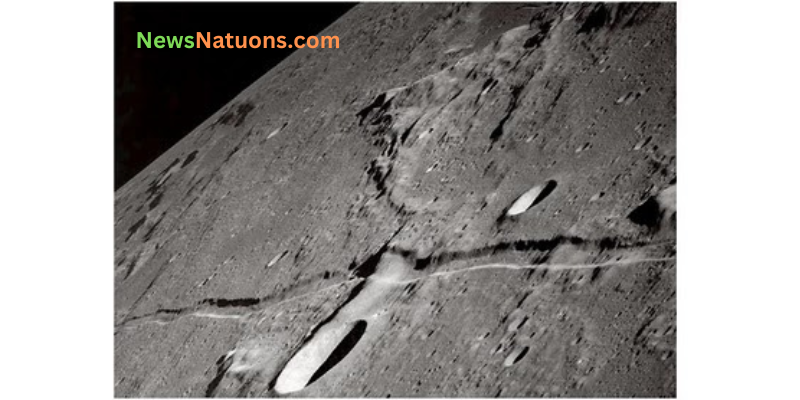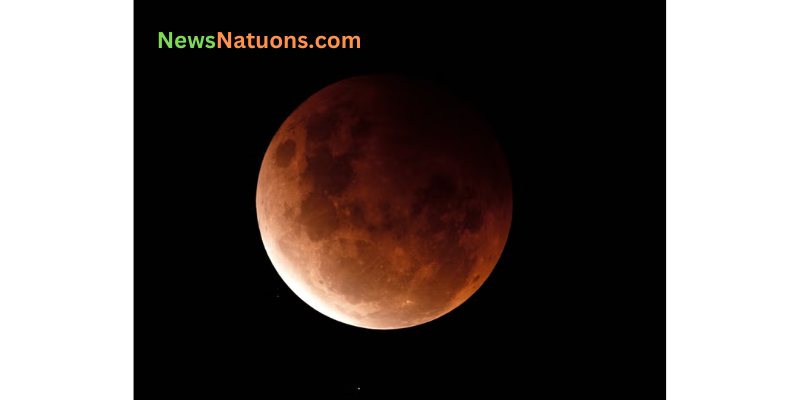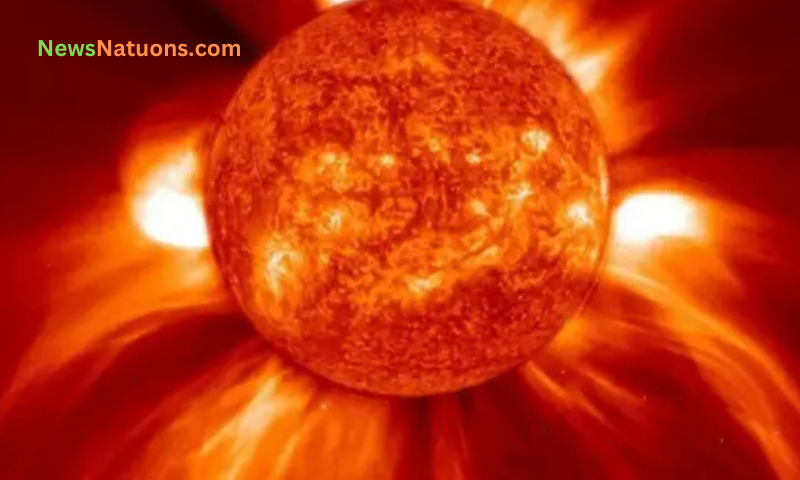A recent study has revealed a surprising discovery related to the glass fragments found on the Moon. These fragments, which were initially collected by China’s Chang’e 5 lunar mission in 2020, have led scientists to conclude that volcanic activity existed on the Moon much more recently than previously thought. The findings challenge earlier assumptions that the Moon’s volcanic history ended billions of years ago.
Evidence of Volcanic Activity 120 Million Years Ago
The research focused on over 3,000 tiny glass fragments extracted from lunar soil samples brought back by the Chang’e 5 mission. Scientists examined the chemical composition and physical structure of these particles to trace their origin. Astonishingly, they found that at least three of these fragments were created by volcanic eruptions, and precise dating revealed they were formed around 120 million years ago. This new data indicates that the Moon experienced volcanic activity far later in its history than scientists had believed.
The Role of Chang’e 5 in the Discovery
The Chang’e 5 mission, launched by China in late 2020, successfully collected about 1.7 kilograms of lunar material from the Moon’s surface. This mission was China’s first lunar sample return and the first such mission globally in over four decades. Among the collected material were these minuscule glass shards, which went unnoticed at first but became central to one of the most fascinating lunar studies in recent years.
Implications for Lunar History and Future Missions
This discovery changes our understanding of the Moon’s geological timeline. Until now, scientists thought that volcanic activity on the Moon had ceased around 3 billion years ago. But the new evidence shows that some volcanic eruptions occurred as recently as 120 million years ago, making them relatively young in geological terms. These findings suggest the Moon had a warmer internal structure and more complex thermal evolution than previously assumed.
This revelation also has implications for future lunar missions. If the Moon was volcanically active more recently, it may still possess underground thermal activity or untapped geological features that could be significant for scientific exploration and even future human settlements.
A New Chapter in Lunar Science
The discovery of these glass particles and their volcanic origin marks a major milestone in space exploration. It demonstrates how advanced technology, such as that used by the Chang’e 5 mission, can uncover previously hidden aspects of celestial bodies. As more lunar missions are planned in the coming years, scientists now have a new mystery to explore—why did the Moon remain volcanically active long after it was thought to be geologically dead?
This new understanding opens doors to further studies and may eventually reshape our approach to lunar exploration. The Moon, once believed to be a quiet and inactive celestial body, now appears to have had a far more dynamic and fiery past than ever imagined.
حال ہی میں کی جانے والی ایک تحقیق نے چاند پر دریافت ہونے والے شیشے کے باریک ٹکڑوں کے بارے میں حیران کن انکشافات کیے ہیں۔ یہ ٹکڑے چین کے 2020 میں بھیجے گئے چینی مشن “چینگ ای 5” کے ذریعے چاند سے لائے گئے تھے۔ اس تحقیق کے مطابق چاند پر تقریباً 12 کروڑ سال پہلے تک آتش فشاں سرگرمیاں موجود تھیں، جو اس نظریے کے برخلاف ہے کہ چاند اربوں سال سے مکمل طور پر غیر فعال ہے۔
چاند پر آتش فشاں سرگرمی کا نیا ثبوت
محققین نے “چینگ ای 5” مشن سے حاصل کیے گئے چاندی مٹی کے نمونوں میں 3000 سے زائد باریک شیشے کے ذرات کا تفصیلی معائنہ کیا۔ ان ذرات کی کیمیائی ترکیب اور طبعی ساخت کا جائزہ لینے سے معلوم ہوا کہ ان میں سے کم از کم تین ذرات آتش فشاں کے پھٹنے کے نتیجے میں وجود میں آئے تھے۔ ان ٹکڑوں کی عمر کا تعین کرنے کے بعد یہ حیران کن حقیقت سامنے آئی کہ یہ ٹکڑے تقریباً 12 کروڑ 30 لاکھ سال پرانے ہیں، جو چاند پر آخری آتش فشاں کے سب سے قریبی وقت کو ظاہر کرتا ہے۔
چینگ ای 5 مشن کا اہم کردار
چین کا “چینگ ای 5” مشن دسمبر 2020 میں کامیابی سے چاند کی سطح سے تقریباً 1.7 کلوگرام نمونے زمین پر واپس لایا۔ یہ چین کا پہلا مشن تھا جو چاند سے مٹی کے نمونے لے کر آیا اور گزشتہ 40 سالوں میں دنیا کا پہلا مشن تھا جو چاندی مٹی واپس لایا۔ ان نمونوں میں شامل شیشے کے یہ باریک ٹکڑے ابتدا میں غیر نمایاں سمجھے گئے، لیکن اب وہ سائنسدانوں کی توجہ کا مرکز بن چکے ہیں۔
تحقیق کے سائنسی اثرات اور مستقبل کی خلائی مہمات

یہ انکشاف چاند کی ارضیاتی تاریخ کے بارے میں ہمارے موجودہ علم کو چیلنج کرتا ہے۔ سائنسدانوں کا ماننا تھا کہ چاند پر آتش فشاں سرگرمیاں اربوں سال قبل ختم ہو چکی تھیں، لیکن اب یہ بات سامنے آئی ہے کہ چاند 12 کروڑ سال پہلے تک بھی اندرونی طور پر گرم اور سرگرم تھا۔ اس سے یہ اندازہ لگایا جا رہا ہے کہ چاند کی اندرونی ساخت زمین سے کہیں زیادہ پیچیدہ ہو سکتی ہے۔
یہ دریافت مستقبل کی چاندی مہمات کے لیے بھی نہایت اہمیت رکھتی ہے۔ اگر چاند حالیہ ماضی میں سرگرم رہا ہے، تو ممکن ہے کہ اس کی زیرِ زمین سطح اب بھی کچھ حد تک گرم ہو یا سائنسی تحقیق کے لیے مزید دلچسپ پہلو رکھتی ہو۔
چاند کی سائنس میں نیا باب
شیشے کے ان ذرات کی دریافت اور ان کی آتش فشانی نوعیت چاند کی تاریخ کے بارے میں ایک نیا باب کھولتی ہے۔ یہ ثابت کرتا ہے کہ جدید خلائی ٹیکنالوجی کی بدولت ہم کائنات کے ایسے رازوں تک پہنچ سکتے ہیں جن کے بارے میں پہلے صرف اندازے لگائے جاتے تھے۔ آئندہ چاندی مشن اب اس نئے سوال کا جواب تلاش کرنے کی کوشش کریں گے: کیا چاند اب بھی اندر سے متحرک ہے، یا یہ محض ماضی کی ایک جھلک ہے؟
یہ نئی معلومات نہ صرف سائنسی میدان میں انقلابی حیثیت رکھتی ہیں بلکہ چاند پر انسانی بستیوں کی تعمیر اور طویل مدتی مہمات کے امکانات کو بھی مزید تقویت دیتی ہیں۔











